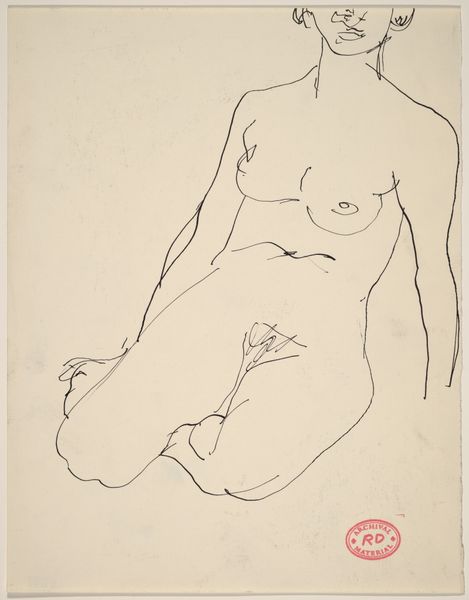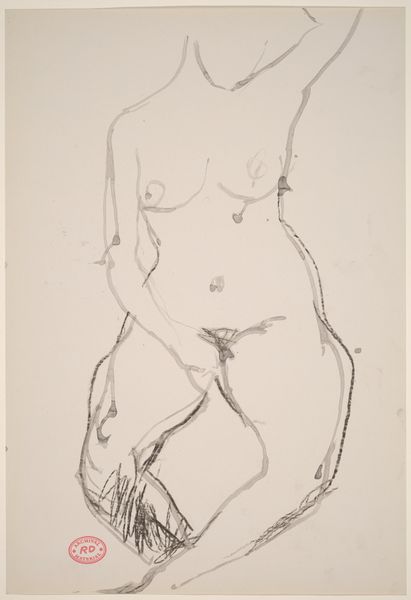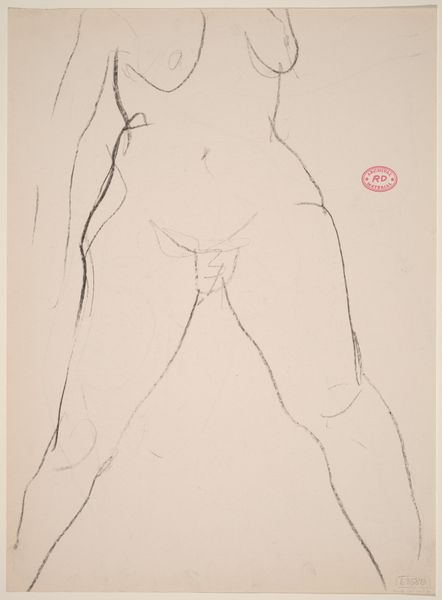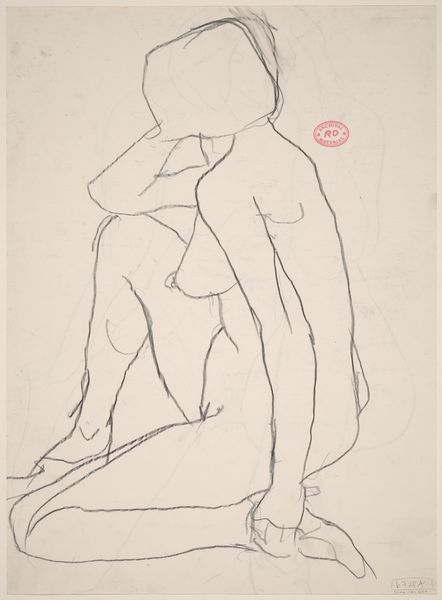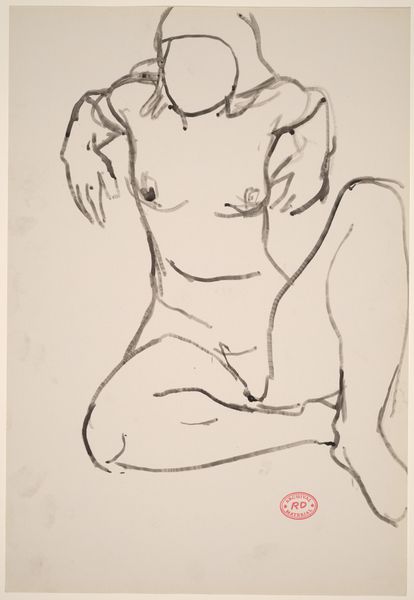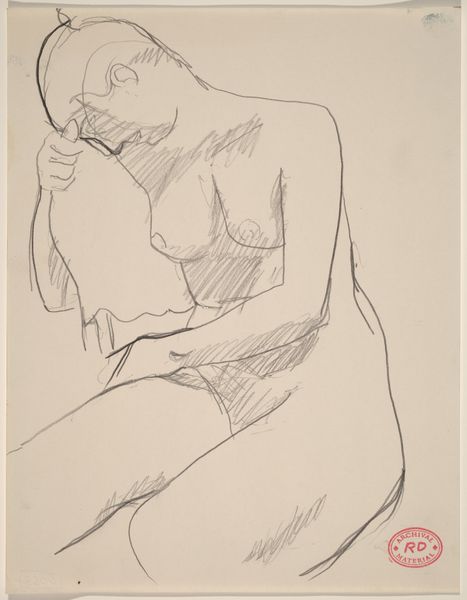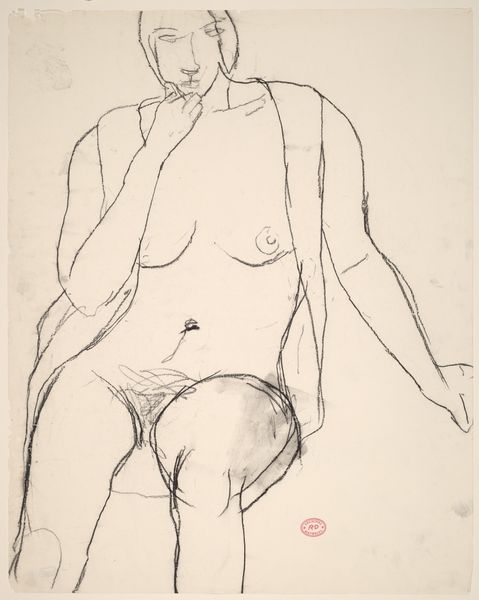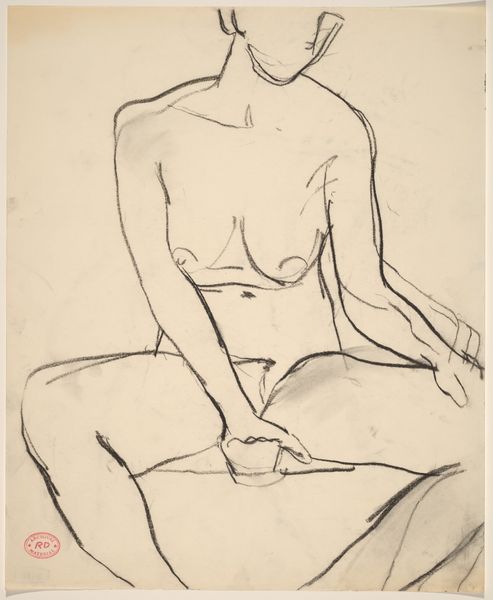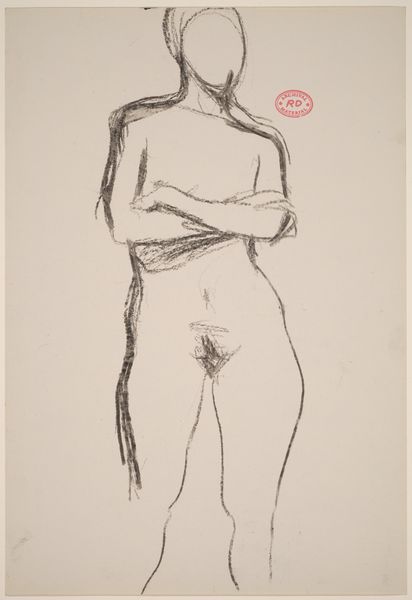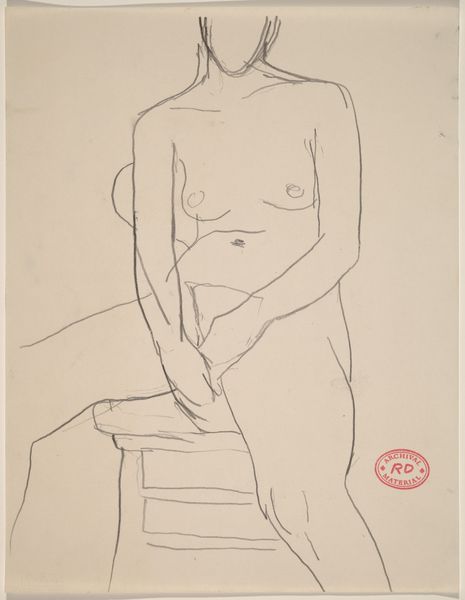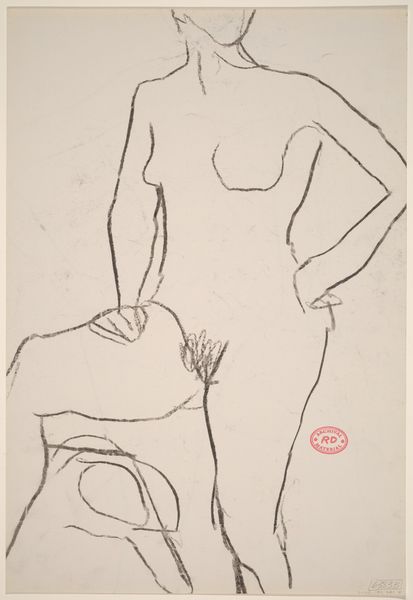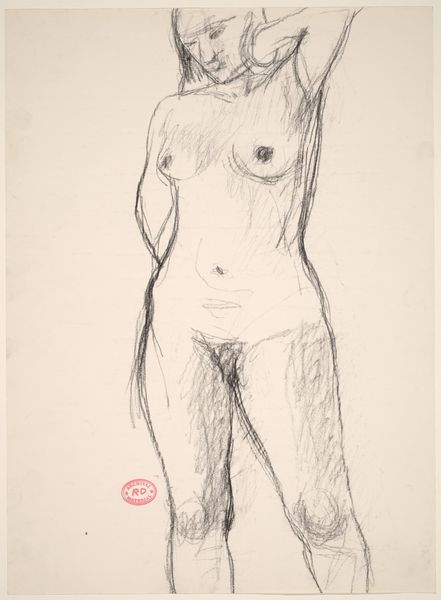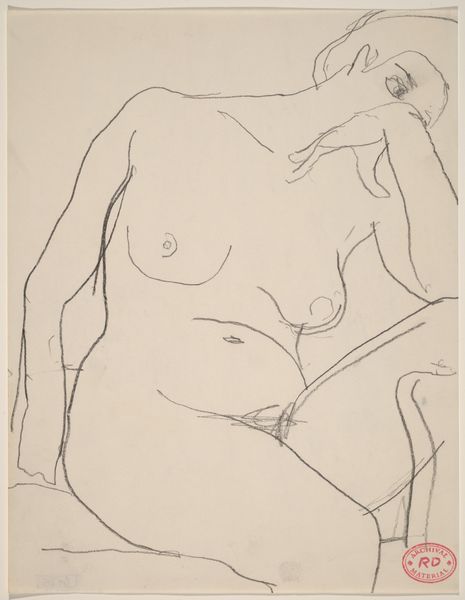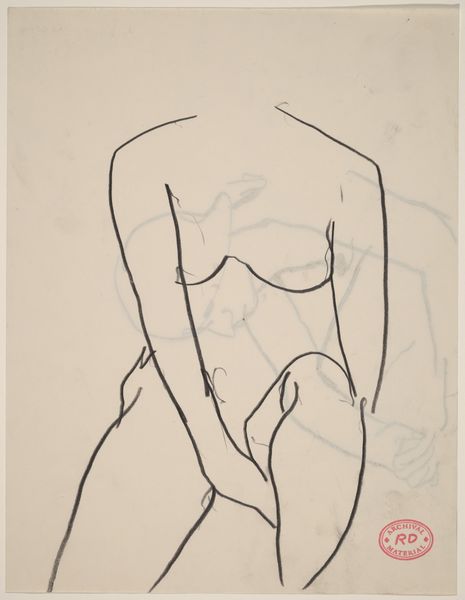
drawing, pencil
#
drawing
#
art-nouveau
#
figuration
#
form
#
female-nude
#
pencil
#
line
#
academic-art
#
nude
Dimensions: Sheet: 22 3/8 × 14 3/4 in. (56.8 × 37.5 cm) Frame: 29 1/4 × 23 1/4 × 1 in. (74.3 × 59.1 × 2.5 cm)
Copyright: Public Domain
Curator: At first glance, it’s wispy, tentative. A pale ghost on paper. Editor: Indeed. Here we have Gustav Klimt's "Standing Nude," created circa 1906-1907. It's currently held at the Metropolitan Museum of Art, a striking example of his drawings which served as the groundwork for his more lavish paintings. You can see Klimt used pencil to explore the nuances of the female form. Curator: The emphasis on outline is intriguing. It reminds me of academic figure studies, yet the gaze she gives the viewer disrupts that formality. There's a definite charge here. Editor: Precisely. Klimt pulls from art history but infuses it with a raw, modern sensuality that challenged Viennese society at the time. Look at the expressive lines around her eyes and mouth versus the more softly rendered limbs. He focuses our attention. Curator: It’s more than attention. I would even say that the darkness between the model's legs, contrasted against the otherwise delicate hatching, turns an objective pose into a statement about forbidden desires and female agency. Editor: It does provoke thoughts about eroticism, especially knowing Klimt's involvement in Vienna's burgeoning avant-garde scene and its embrace of exploring sexuality in art. Curator: Consider how his drawings offered an important step to shaping the public perception of nudity in art as honest portrayals of humanity and personal emotions and feelings rather than solely as objects. Editor: And the immediacy of pencil on paper, without the opulent gilding and ornamentation Klimt is famous for, lets us see the core of his fascination with the human body. It cuts away everything that’s non-essential. It really humanizes him. Curator: Definitely. The power of Klimt comes through by allowing these private, raw gestures and ideas out into public life where they became something much bigger than individual emotions or impulses alone. Editor: Ultimately, this piece and other drawings like it invite a fascinating exploration into the roots of the artist’s symbolic language and challenges ideas surrounding historical expectations and social norms.
Comments
No comments
Be the first to comment and join the conversation on the ultimate creative platform.
